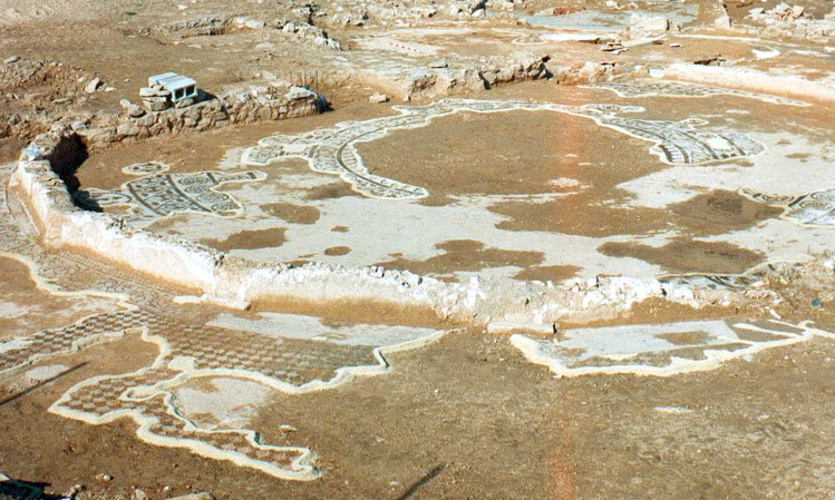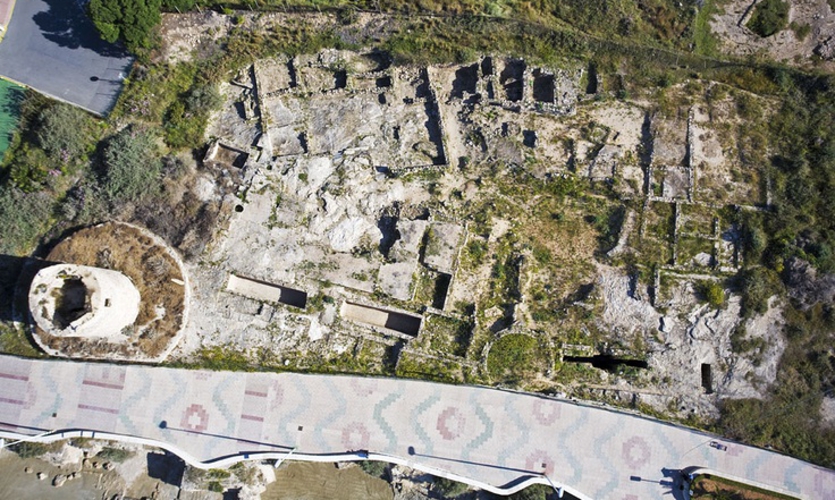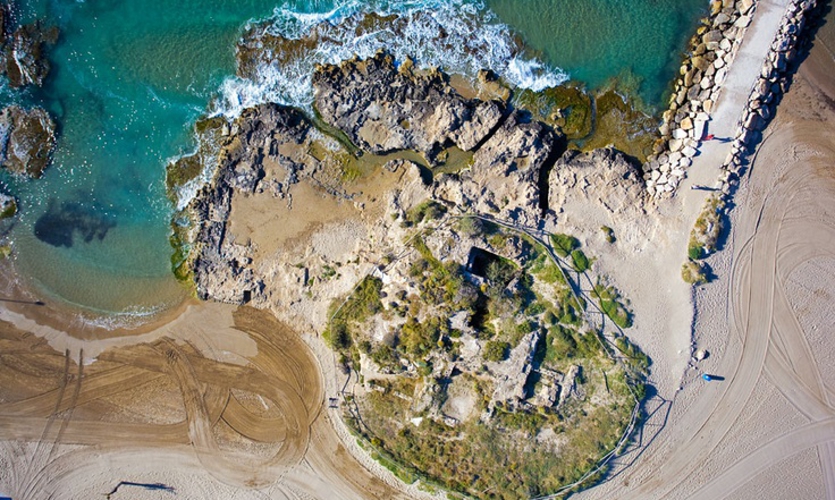The bay of Calpe with the vigilant rock of Ifach has been a landscape admired and appreciated by the different cultures that have been part of this land since ancient times.
The Roman site of Baños de la Reina in Calpe is an exceptional coastal enclave. Located in front of a bay with calm waters and sheltered by the Peñón de Ifach, it still submerges its rocky arms in the crystalline waters of Mare Nostrum today.

The sea and salt were the basis and the sustenance of the ancient Roman colonists, giving rise to fluid commercial exchanges that there is evidence of. This activity produced a small population who built their houses on the coastal dunes, resulting in selective and diversified urban planning.
After the passage of time and centuries of neglect, the popular imagination inherited the ancient legacy, identifying the pools as the “baths of the Moorish queen”, which is how the site got its name. The existence of some drainage passages, now closed, adds to the myth: these were the tunnels that reached a mysterious palace which the “Moorish queen” used to get to her coastal bath. This popular belief is also an important part of the cultural heritage of the site.
The Baños de la Reina site consists of three parts:
1. Roman Vicus
The Roman site of Baños de la Reina is a coastal enclave that is known for its magnificent architectural design and its mosaics, one of the most important collections of its kind in all of Roman Hispania. Although only 25% of its surface has been excavated so far, it is enough to discern the magnitude of this Roman villae fitted with all kinds of luxuries 2,000 years ago. The pools carved out of the coastal rock, used to supply fresh fish, led to the name of the enclave which is still used today.
During the 1st and 2nd centuries AD, they constructed the first homes, a small thermal complex known as the “Muntanyeta thermal baths”, and an industrial area which features the construction of a unique waterwheel carved out of the rock that supplied drinking water for the area. At the end of the 3rd century AD, a luxurious villae with a circular patio was constructed, fitted with an extraordinary private thermal complex. Finally, it is during the 5th and 6th century when traces of conversion to Christianity appear in this key navegation point with the construction of a modest church with a baptistry with a Greek cross and an adjacent cemetery.

2. Muntanyeta Thermal Complex
As a result of the remodeling of the coastal breakwater in 1993, the remains of this small 500 m thermal complex, known as the “Muntanyeta thermal baths”, were uncovered.
Among the discoveries documented during its excavation, various pools had survived, as well as a natatio with cold water (frigidarium), which was accessed using three steps. Next to this were various ovens responsible for maintaining the appropriate temperatures in the hot rooms (caldarium) and warm rooms (tepidarium). The heating system developed by Roman engineers used hollow floors elevated by columns of bricks (pilae) and walls with air chambers made from ceramic tubes (tubuli) that facilitated the circulation of heat through the different rooms and kept them heated.
Joining these areas was a room with a floor formed by spikes (opus spicatum), as well as other complementary spaces intended for recreation, which were richly decorated with grey marble plates from Algeria.

3. The Roman Fish Farms of Baños de la Reina
The existence of large basins in the sea, carved into sandstone known as “pedra tosca”, and popularly known as the “baths of the Moorish queen”, led to the naming of the entire archaeological site.
The complex, carved from the same coast, consists of a large rectangular tank with an area of 165 m. Its interior was subdivided by natural stone walls, creating six pools with an opening in each one to connect them. Sea water entered through four canals, also carved from the rock, which allowed the free flow of water to all of the pools. These canals were covered with perforated gates, which allowed water to flow while preventing blockages and the escape of the fish inside.
While these fish farms or piscinae are associated with the farming of live fish, we cannot rule out its possible use as an aquatic garden in order to observe marine beauty, just like other Roman villae in the Tyrrhenian Sea, where these facilities, which were expensive to build and costly to maintain, represented the power and social prestige of their owner.


